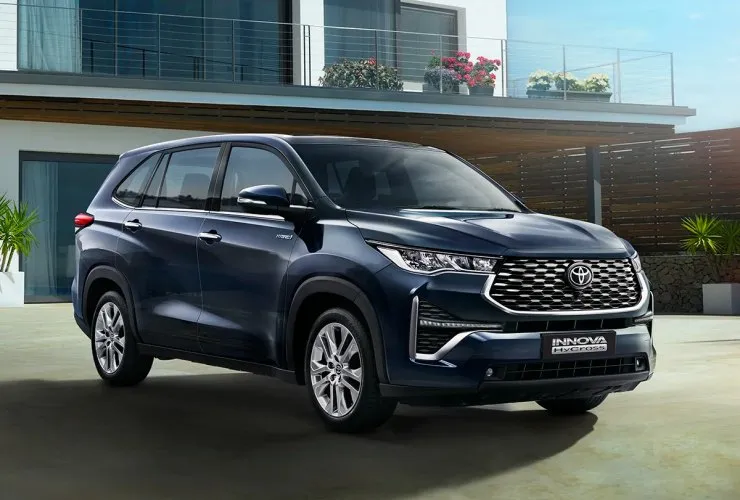Nitin Gadkari launches the world’s first BS-VI (Stage-II), electric flex-fuel vehicle in India today in an effort to reduce the country’s dependence on traditional fuels.
The new ethanol-fueled Toyota Innova launches today by Nitin Gadkari and will run on 100 percent ethanol. It will be the world’s first BS-VI (Stage-II), electrified flex-fuel vehicle. As a result, the effective price of ethanol would be much lower because it would generate 40 percent electricity.
Nitin Gadkari had announced the Toyota Mirai EV as a hydrogen-powered car in 2022. By making people aware of the utility of Green Hydrogen and Fuel Cell Electric Vehicle (FCEV) technology, the car was launched as a pilot project aimed at creating a Green Hydrogen based ecosystem in India.
A move to biofuels aims to reduce the huge amount spent on petroleum imports (Rs 16 lakh crore) and promote India’s energy independence.
It is important for us to take more (sustainability) initiatives because pollution is a problem. It is very important to protect the environment and ecology. The air and water pollution has to be reduced, and the quality of our rivers needs to be improved. This is a big challenge. “Our ecology and environment must be protected,” Gadkari said.
Ethanol-powered flexible fuel cars: How Do They Work?
The flexible fuel vehicle (FFV) is powered by an internal combustion engine and is capable of running on gasoline or any blend of gasoline and ethanol up to 83%.
By volume, flex-fuel contains 85 percent ethanol fuel and 15 percent gasoline or other hydrocarbons.
With the use of advanced technology, the calorific value (energy contained in the fuel) of bio-ethanol will become on par with petrol.
It will be the first 100 per cent dual fuel vehicle to run on Indian roads since an FFV can run on petrol or ethanol.
Ethanol, an economical by-product of sugar production, can be a viable alternative to petrol as fuel. It is more affordable than the latter, since it can be created domestically from crops and does not involve importing. Quite a few carmakers in India are planning on using ethanol mixtures to fulfill government regulations on emissions and several prominent ones among them – Maruti Suzuki, Tata Motors, Toyota, Honda and Mahindra and Mahindra – have already made moves towards this goal.
The country has been implementing projects in almost all other alternative energy technologies, but reducing vehicular emissions has become one of its most urgent goals in recent years. Thus, hydrogen and electric vehicles have become the focus of attention.
Ethanol-blended gasoline reduces harmful pollutants such as carbon monoxide, hydrocarbons, and nitrogen oxides by reducing their emissions.
In addition, sugarcane and corn can be used to produce ethanol, reducing India’s reliance on imported crude oil.
Among many other places, flex fuel engines are already popular in Brazil, the United States, the European Union, and China.
Following the United States, Brazil, the European Union, and China, India is the fifth largest producer of ethanol.
There is no need to adjust the ratio of ethanol to petrol in flex fuels, but the most commonly used flex fuel is 85 percent ethanol and 15 percent petrol. In contrast to petrol, ethanol is not a byproduct of crude oil. It is instead derived from agricultural feedstocks such as corn, sugarcane, hemp (bhang), potato, and rice.
Also Read:
